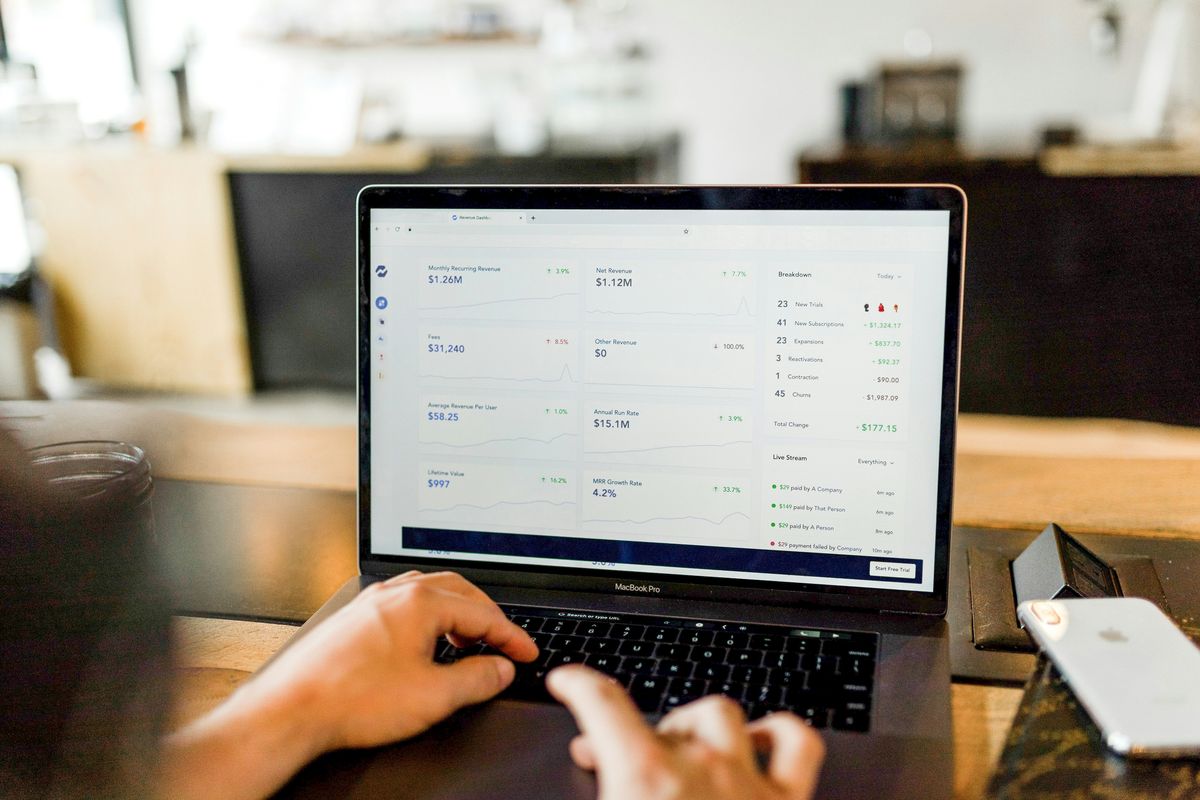Top Free Social Media Analytics Tools
In the digital age, social media has become a powerful tool for businesses and individuals alike. It's a platform for engagement, brand building, and most importantly, understanding your audience.
But how do you make sense of all the data generated by your social media activities?
Enter social media analytics tools.
These tools help you track, measure, and analyze your social media performance. They provide insights into your audience's behavior, preferences, and engagement with your content.
But not all tools are created equal. Some come with a hefty price tag, while others are available for free.
This guide focuses on the latter. We'll explore the top free social media analytics tools that can help you make data-driven decisions to improve your social media strategies.
We'll delve into their features, benefits, and limitations. We'll also provide tips on how to choose the right tool for your needs and how to get the most out of it.

So, whether you're a marketer, a small business owner, or just someone interested in social media analytics, this guide is for you. Let's dive in.
Understanding Social Media Analytics #
Social media analytics is the cornerstone of understanding your digital presence. It enables you to assess the effectiveness of your social media efforts. By analyzing data, you gain insights into what works and what doesn't.
Understanding key social media metrics is crucial. These metrics include engagement rates, impressions, and follower growth. Monitoring these helps you evaluate your audience's response to your content.
A core aspect of social media analytics is tracking engagement. This includes likes, shares, comments, and clicks. Monitoring these interactions provides a clear picture of how engaging your content is.
Analytics can significantly influence your marketing strategies. By examining your social media performance, you can identify successful tactics. This data-driven approach helps you make informed decisions.
A strong marketing strategy relies on concrete data. With social media analytics, you can tailor your campaigns to fit audience needs. It offers insights into trends, allowing adjustments for optimized outcomes.
Here's a list of key metrics to monitor:
- Engagement Rate : Measures how actively your audience interacts with your content.
- Reach : Indicates how many unique users have seen your posts.
- Impressions : Shows the total number of times your content is displayed.
- Clicks : Tracks the number of users who click on your links or posts.
- Conversion Rate : The percentage of users who complete a desired action based on your content.

Effectively leveraging analytics allows for real-time adjustments to strategies. This results in improved audience engagement and better ROI. With a thorough understanding of social media analytics, businesses can optimize their digital efforts, boosting overall performance.
The Role of Free Social Media Analytics Tools #
Free social media analytics tools offer valuable insights without a financial commitment. While paid tools often provide more comprehensive features, free tools can still pack a punch. They are perfect for small businesses and individuals new to analytics.
Comparing free and paid tools reveals some trade-offs. Paid tools often provide advanced features like sentiment analysis and competitor tracking. However, free tools can deliver essential metrics to enhance your social media strategy.
Free tools do come with limitations. Many have restricted access to certain data points or limit the number of social accounts you can track. Despite these limits, they can still provide valuable insights.
The benefits of free tools should not be underestimated. They allow users to start measuring performance without incurring costs. This accessibility is crucial for small businesses and startups aiming to grow their digital presence.
To make the most of free analytics tools, align them with your social media goals. Focus on understanding the features available and utilize them to track key metrics. Regularly reviewing these metrics helps you stay informed and adjust strategies.
Here's how to leverage free tools effectively:
- Familiarize Yourself with the Tool's Features : Understand what metrics and data the tool can provide.
- Set Clear Goals : Define what you want to achieve with your social media strategy using these metrics.
- Track Key Metrics Consistently : Regular observation helps to identify trends and measure progress.
- Experiment and Adjust : Use insights from the data to try new approaches and adjust strategies over time.

In conclusion, while free tools may not offer as many features as paid tools, their value lies in the ability to start analyzing immediately. They enable businesses and individuals to gain insights, refine strategies, and drive social media success without burdening their budget.
Top Free Social Media Analytics Tools to Consider #
Tool 1: Hootsuite #
Hootsuite offers a robust free plan with essential analytics features. Users can track social performance across several networks. Its intuitive dashboard simplifies data viewing.
However, the free plan only allows tracking three social profiles. Users looking for in-depth analytics might need to consider upgrading.
With Hootsuite, users have the advantage of scheduling posts. This feature aids in managing social media timelines effectively.
Features:
- Track basic social media metrics
- Schedule up to 30 posts at once
- Supports multiple social networks

Tool 2: Buffer #
Buffer is known for its scheduling capabilities. However, it also provides basic analytics in its free version. Users can see post engagement levels quickly.
The free version of Buffer limits analytics to individual posts. Those needing a holistic view will need the paid tier. The sleek interface, though, makes navigation easy.
Limitations:
- Limited social profiles for tracking
- Basic analytics focus on individual posts only
- Limited reporting capabilities

Tool 3: Google Analytics #
Google Analytics is a versatile tool that extends to social media. While primarily a web analytics tool, it tracks social referral data. A great option for users already familiar with the Google ecosystem.
The tool requires some setup to track social media effectively. Users should customize dashboards to see social metrics. However, its powerful features are worth the effort.
User Interface:
- Customizable dashboards
- Integration with Google Ads
- Data visualization for clarity

Tool 4: Social Mention #
Social Mention offers real-time social media insights. It provides metrics like strength, sentiment, passion, and reach. This tool is beneficial for monitoring brand mentions.
Its free version is web-based, meaning no app or software to install. On the downside, the data may sometimes lack depth. Yet, its sentiment analysis is noteworthy.
Features:
- Real-time tracking of brand mentions
- Sentiment analysis
- No installation needed

Tool 5: TweetDeck #
Owned by Twitter, TweetDeck is a favorite for Twitter analytics. It provides real-time tracking of tweets and hashtags. Users can also manage multiple accounts through the interface.
However, analytics are confined to Twitter. Those seeking cross-platform analytics may find this limiting. Despite this, its real-time tracking is beneficial for fast-paced accounts.
Limitations:
- Twitter-only analytics
- Focuses mainly on live stream data
- Requires familiarity with Twitter platform

Tool 6: Crowdfire #
Crowdfire gives insights into follower growth and engagement. Users receive a daily report summarizing performance. It supports not only social platforms but also blogs.
The free plan limits some functionalities like advanced data. However, its ability to streamline various accounts is an advantage. Customizable content suggestions are a plus.
User Interface:
- Clean and user-friendly
- Visual representation of follower trends
- Supports multi-channel integration

Tool 7: Iconosquare #
Iconosquare specializes in Instagram and Facebook analytics. It offers a free limited trial with some impactful features. Users can monitor follower demographics and engagement.
The trial limits the duration of use, but it's useful for short-term insights. Users seeking Instagram-focused analysis will find it handy. The detailed data visualization improves user understanding.
Features:
- Instagram and Facebook analytics
- Follower demographic insights
- Data visualization tools

Tool 8: Klout (Historical Note) #
Although Klout is no longer active, it was once a popular tool. It provided a Klout Score indicating social media influence. Users gained insights into their social reach and engagement.
While not available now, it represented an early attempt at simplified social analytics. Some tools today still try to replicate its ease of understanding. Lessons from Klout continue to influence analytics design.
Legacy:
- Inspired social media influence scoring
- Simple user experience
- Set the stage for future analytics tools

These free tools, though sometimes limited, can significantly enhance your social media analytics efforts. Consider your specific needs to choose the best fit. Each provides a unique angle that can help improve your understanding of social media performance.
How to Choose the Right Free Social Media Analytics Tool #
Selecting the right analytics tool begins with understanding your social media objectives. Identify your key goals, whether increasing engagement, tracking reach, or measuring ROI. A clear vision of your needs will guide your choice.
Once your goals are set, it's time to compare tool features. Not every tool offers the same capabilities. List necessary features like sentiment analysis or hashtag tracking. Rank tools based on how they fulfill these requirements.
Another critical step is considering integration potential. The ideal tool should seamlessly integrate with your existing marketing stack. Check if the analytics tool can connect with platforms you already use, like email marketing or CRM systems.
Key Factors to Consider:
- Clearly defined social media objectives
- Required features for analysis
- Integration capabilities with current tools
Choosing a tool also involves evaluating ease of use and data visualizations. A user-friendly dashboard can make a huge difference in data interpretation. Remember, a tool's usability can save time and enhance productivity.

Tips for Getting the Most Out of Your Social Media Analytics #
Unlocking the full potential of social media analytics requires more than just collecting data. It's important to focus on interpreting this data to drive decisions. Look for patterns and insights that align with your goals.
Customizing dashboards and reports can tailor insights to your specific needs. Focus on metrics that are most relevant to your objectives. Make adjustments so that the information presented is both digestible and actionable.
Regular tracking is key for maintaining a successful social media strategy. Analyze performance data consistently to stay informed about trends and patterns. This continuous review allows for timely adjustments and optimization of your strategy.
Essential Practices for Using Analytics:
- Focus on actionable insights from data
- Customize dashboards to fit needs
- Consistent monitoring for strategy improvements
Always be flexible and ready to adapt to changing circumstances. Don't hesitate to refine your approach based on your analytics findings. Being proactive will help you stay ahead in the ever-evolving social media landscape.

Real-World Success Stories: Analytics in Action #
Businesses worldwide are harnessing free social media analytics tools to elevate their performance. For instance, a local bakery used these tools to better understand customer preferences. This insight led to tailored promotions, resulting in increased foot traffic and sales.
Another example is a digital marketing agency that utilized analytics for their clients. By closely examining engagement metrics, they optimized content strategies. This approach improved client visibility and interaction across multiple platforms.
These cases highlight valuable lessons for leveraging free tools effectively. First, consistency in monitoring data can uncover essential trends. As seen in the cases, consistent tracking of metrics enabled timely strategy shifts.
Best practices also emerge from these stories. For example, focusing on specific metrics aligned with business goals maximizes outcomes. Tailoring strategies based on analytic insights is pivotal for driving growth and engagement.

The Future of Social Media Analytics #
Social media analytics is constantly evolving, with exciting trends on the horizon. Predictive analytics is becoming essential, helping brands foresee trends and adapt swiftly. Real-time sentiment analysis also promises to offer instant insights into audience perceptions.
Staying informed about tool updates is crucial for maximizing benefits. As analytics platforms enhance features, users should regularly explore new capabilities. This proactive approach ensures you harness the full potential of analytics tools, maintaining a competitive edge.

Conclusion #
Social media analytics is a powerful tool for gaining valuable insights into your online strategies. It helps track metrics, understand audience behavior, and measure campaign success.
Exploring free social media analytics tools can offer significant advantages without breaking the bank. By utilizing these tools, you can enhance your online presence, refine strategies, and achieve your goals. Dive into the world of analytics to unlock data-driven opportunities and improve your engagement and reach.
